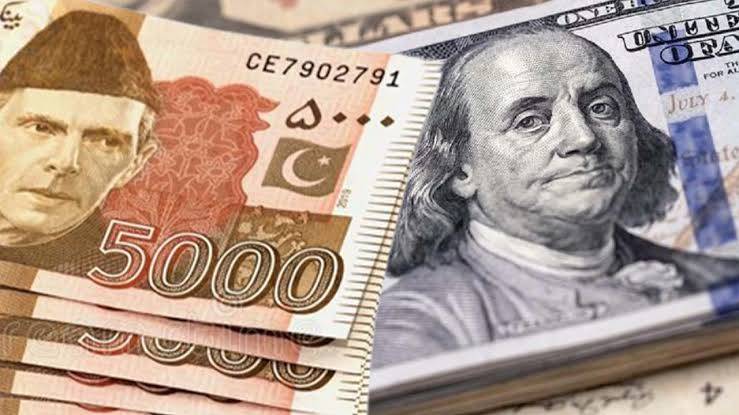
The Pakistani rupee remained under pressure in the interbank market for the fourth consecutive day as the country's dwindling foreign exchange reserves took a toll on the market sentiment.
Data released by the State Bank of Pakistan (SBP) on Friday showed that the Pak Rupee closed the day at Rs. 225.64 against the US dollar in the interbank market, compared to Thursday’s close of Rs. 225.43. In the open market, the rupee closed at Rs. 234.7 against the dollar. Informal rates hovered above Rs. 250 per dollar.
Friday's drop came after ratings agency S&P Global lowered its long-term sovereign credit rating on Pakistan from B- to CCC+, and the short-term rating from B to C, on enduring external, economic, and fiscal risks.
External sector figures are not encouraging for the country as foreign exchange reserves are decreasing rapidly, and anticipated foreign inflows are nowhere in sight yet.
Foreign exchange reserves fell to $6.1 billion in the week ending on 16 December 2022: the lowest level since April 2014. Reserves held by the central bank declined by $584 million.
The real effective exchange rate (REER) also declined to Rs. 98.8 in November from Rs. 100.2 in the previous month.
Currency dealers believe that administrative measures had been used to artificially manage the rupee-dollar parity, including restrictions on the opening of letters of credit, import bans, and curbs on dollar repatriation.
Financial pundits predict that the sentiment on the rupee won’t improve until inflows from friendly countries materialise.
Data released by the State Bank of Pakistan (SBP) on Friday showed that the Pak Rupee closed the day at Rs. 225.64 against the US dollar in the interbank market, compared to Thursday’s close of Rs. 225.43. In the open market, the rupee closed at Rs. 234.7 against the dollar. Informal rates hovered above Rs. 250 per dollar.
Friday's drop came after ratings agency S&P Global lowered its long-term sovereign credit rating on Pakistan from B- to CCC+, and the short-term rating from B to C, on enduring external, economic, and fiscal risks.
External sector figures are not encouraging for the country as foreign exchange reserves are decreasing rapidly, and anticipated foreign inflows are nowhere in sight yet.
Foreign exchange reserves fell to $6.1 billion in the week ending on 16 December 2022: the lowest level since April 2014. Reserves held by the central bank declined by $584 million.
The real effective exchange rate (REER) also declined to Rs. 98.8 in November from Rs. 100.2 in the previous month.
Currency dealers believe that administrative measures had been used to artificially manage the rupee-dollar parity, including restrictions on the opening of letters of credit, import bans, and curbs on dollar repatriation.
Financial pundits predict that the sentiment on the rupee won’t improve until inflows from friendly countries materialise.

